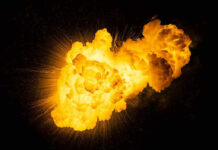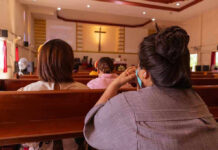Space debris has struck a Chinese return capsule, stranding three astronauts in orbit and exposing the dangerous reality of our cluttered space environment that threatens all future missions.
Story Snapshot
- Three Chinese astronauts remain stranded aboard Tiangong space station after debris disabled their return capsule
- Shenzhou-20 crew’s November 5th return to Earth cancelled indefinitely while engineers assess damage
- First known incident of space debris rendering a crewed return vehicle unusable
- China’s space agency implementing backup protocols using Shenzhou-21 capsule if necessary
Debris Strike Forces Mission Extension
Commander Chen Dong, pilot Chen Zhongrui, and engineer Wang Jie found themselves in an unprecedented situation when space debris struck their Shenzhou-20 return capsule just hours before their scheduled November 5th departure from the Tiangong space station. The China Manned Space Agency confirmed the incident forced an indefinite mission extension while engineers conduct comprehensive damage assessments. This marks the first time a crewed Chinese spacecraft has been disabled by orbital debris, highlighting the escalating dangers facing all space operations.
The crew had completed a successful seven-month mission aboard China’s Tiangong space station, launching on April 24, 2025. Their return was planned as part of a routine crew rotation, with the Shenzhou-21 team having arrived on October 31st to begin the handover process. The debris impact occurred in the critical final hours, demonstrating how quickly space missions can shift from routine operations to emergency protocols.
Growing Orbital Hazard Threatens All Nations
The Tiangong space station operates at approximately 400 kilometers altitude, a region increasingly congested with satellites and debris from decades of space launches and anti-satellite weapons tests. This incident underscores the mounting risks facing American astronauts aboard the International Space Station and all future space exploration efforts. The proliferation of space junk threatens our nation’s space assets, military satellites, and commercial operations that support everything from GPS navigation to communications networks.
Previous incidents involved minor debris avoidance maneuvers, but this marks an escalation where actual mission-critical hardware sustained damage. China previously maneuvered Tiangong to avoid Starlink debris in 2021, demonstrating the ongoing nature of this threat. The cascading effect of orbital debris creates an environment where each collision generates more dangerous fragments, potentially triggering a chain reaction that could make certain orbital regions unusable for decades.
China Tests Crisis Management Protocols
Chinese space officials are implementing contingency plans that include potential use of the Shenzhou-21 return vehicle if the original capsule proves irreparable. All six astronauts currently aboard Tiangong remain safe and continue station operations while mission control works through rescue scenarios. The incident tests China’s space program resilience and highlights the importance of redundant systems for crew safety in an increasingly hazardous orbital environment.
CMSA announced the situation through official channels and social media platforms, maintaining transparency about the ongoing risk assessment. No timeline has been established for the crew’s return, indicating the severity of the damage assessment process. This cautious approach reflects the high stakes involved in ensuring astronaut safety while managing the technical and political implications of the first major debris-related crisis in China’s human spaceflight program.
Sources:
Chinese Astronauts Stranded in Space After Debris Hits Return Capsule
Three Chinese Astronauts Stranded in Space After Debris Hits Their Return Capsule
Chinese Astronauts Stranded in Orbit: Here’s Complete Truth











